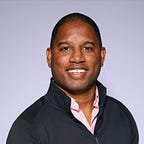Designing the Perfect Product from Scratch
So you have an idea..
So you have a revolutionary idea for a new product. You have a vision, a well thought out business model, and you’re able to execute. If everything goes as planned, you’ll improve the lives of billions of consumers and fundamentally reshape the industry.
But how do you turn a good idea into a successful product?
For starters, it’s important to acknowledge that building a product is incredibly difficult. Most ideas fail to become successful businesses. The most common reason is that unexperienced product managers often underestimate their need to adapt to changing customers needs and don’t iterate fast enough.
Successful product managers have mastered the art and science of collecting insights from users, using the data they collect to direct future iterations and integrating quickly — At the same time, they’re continuously improving the user experience.
Below are few tips that I’ve learned along the way that lead to building a successful product.
Bet Small
Building a product successfully requires making an infinite number of decisions — for example, who is your target audience, what should you name your product, how refined should your MVP be?
Like many things in life, in product management, predicting the outcome of a decision is difficult at best. Unlike a game like checkers, you rarely ever have all the information that you need to make an informed decision. In the early days, you don’t have historical data to rely on and market dynamics are constantly changing as are customer needs.
A tip that I often use when I’m faced with the unknown is to consider any potential outcomes that my decisions may have, then estimate the probability of each outcome. In short, hypothesize.
For a product manager, this means conducting experiments that result in data on what users want then use that data to drive future iterations. This will increase the probability of achieving success.
Interview Real People
The first step that you should take after coming up with a new product or new feature is to test it with real customers. Running early tests with a small group of real users gives you invaluable data that you need to decide if it has the potential to succeed.
A few effective ways to conduct product research and test a new features include:
- Conducting surveys and interviews
- Evaluate how users use competitive products
- Create landing pages and use wireframes to test users
The above strategies, however limited, can produce critical data that will result in more informed decisions and help you avoid costly mistakes.
If the data tells you that your users like your idea it’s not a guarantee that you should immediately begin building the product.
Synthesize your data
After conducting a few tests, you’ll have valuable insight to help influence future iterations. Here’s what those results look like on Alpha:
- Synthesize your data from each user experiment.
- Reflect on what you learned. Use the data you’ve collected to decide the likelihood that your concept will be successful.
- Determine what adjustments you can make that may improve your likelihood of success.
In short, build on what users loved and discard what they didn’t and then, run more tests.
In conclusion
The most successful product managers don’t wait for the perfect plan or the perfect idea to begin. They start by experimenting, using what they learned from each experiment to inform future decisions and eventually build product that their customers love.
Originally published at Sterling Smith’s Blog.
